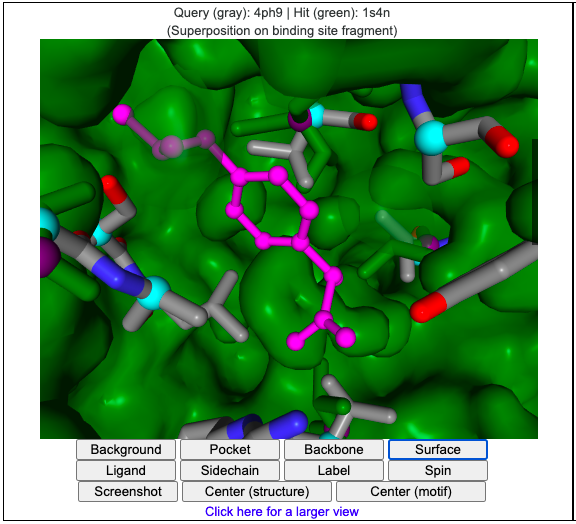
To provide examples on how the web server can be used for protein binding site prediction, we illustrate some case studies used to analyse protein-drug interactions in different perspectives.
Ibuprofen is an NSAID that is indicated for moderate pain and is known to inhibit prostaglandin synthease (COX). COX-1 and COX-2 inhibition slower down the synthesis of prostanoids which lead to control of pain, fever and inflammation.digestion and absorption of carbohydrates thus reducing blood glucose concentration (https://go.drugbank.com/drugs/DB01050). Ibuprofen may bind to multiple protein targets such as prostaglanding G/H synthase (1 and 2), serum albumin, fatty acid binding protein and peroxisome proliferator-activated receptor gamma.
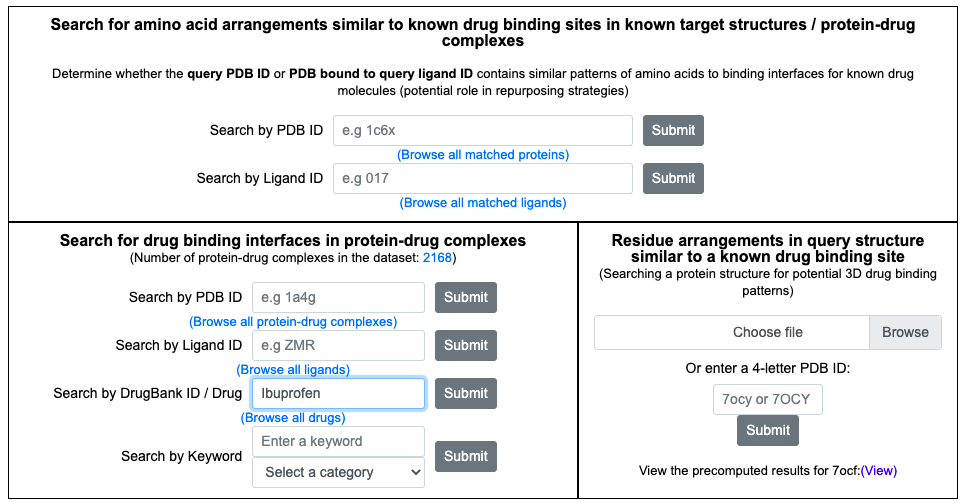
From the ‘Search for drug binding interfaces in protein-drug complexes’ interface, drug search for ‘Ibuprofen’ returns the drug indication as retrieved from the Drugbank, a visualization of PDB structure for Ibuprofen molecule (PDB ligand ID: IBP or IZP), and a list of known binding sites for Ibuprofen derived from the PDB.
The list returns binding sites for PDB ligand IBP and IZP, which are the two stereoisomers of Ibuprofen. By screening through the list, we can know that Ibuprofen has been co-crystalized to multiple targets based on different macromolecule name and Pfam annotation indicated in the sixth and seventh column, respectively. Some of the Pfam annotations involved include;
An_peroxidase, EGF, Serum_albumin, Phospholip_A2_1, AMP-binding, Transferrin, Lipocalin and p450.
(Link)
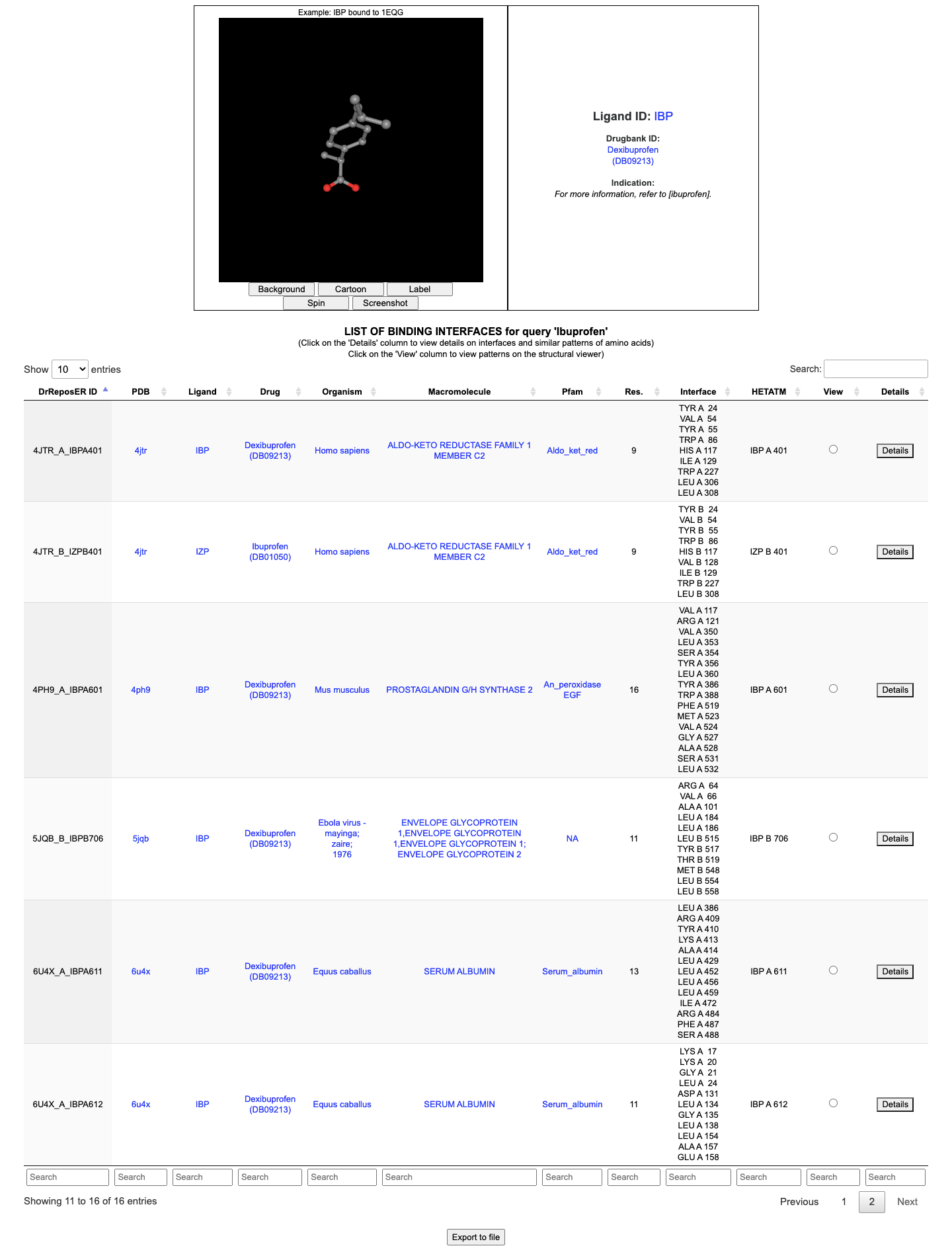
One of the binding sites is from a prostaglandin GH synthase 2 from Mus musculus (PDB ID: 4ph9) that contains 16-residue pattern surrounds an Ibuprofen molecule.
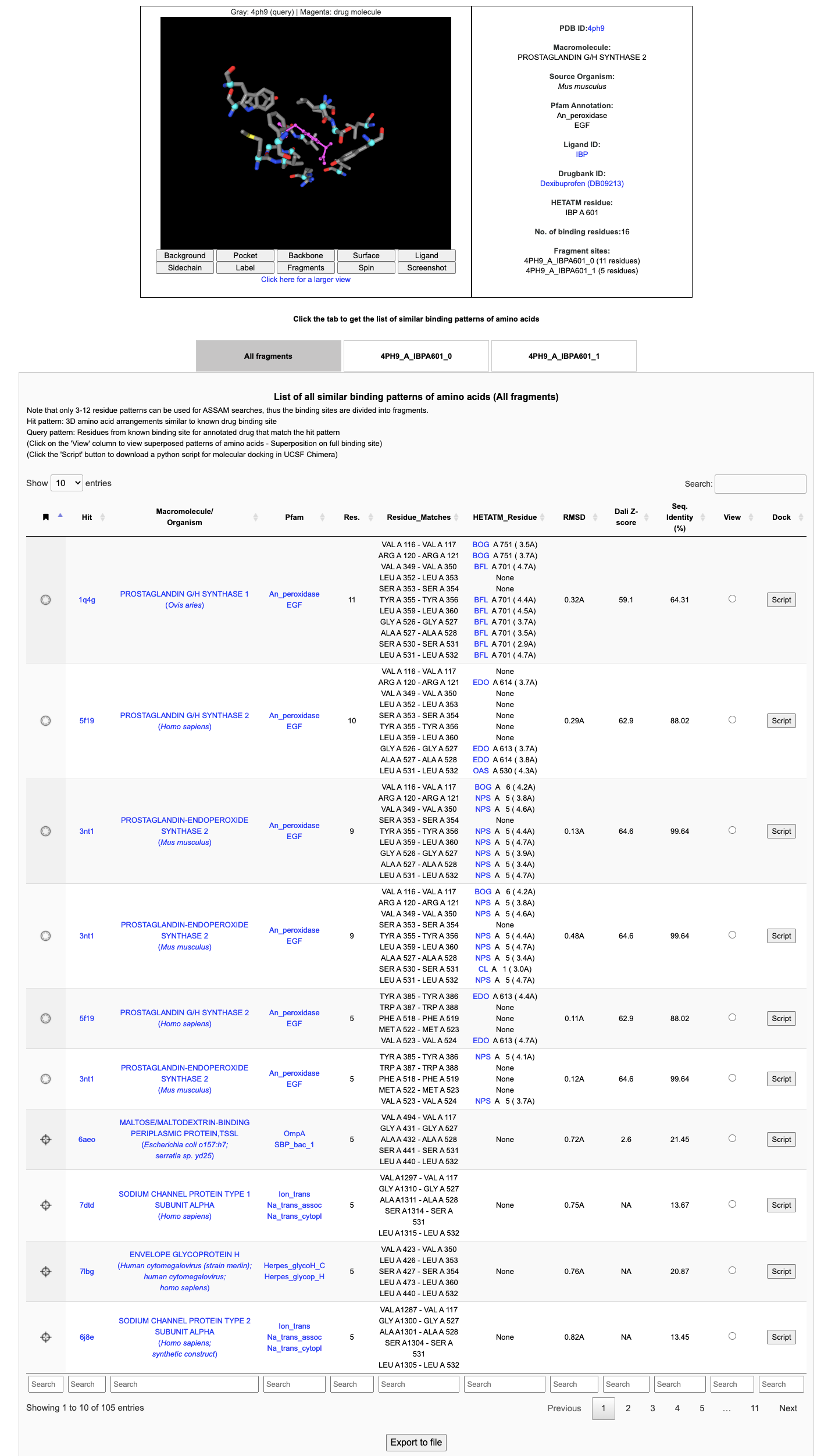
Clicking the button on the last column returns a new page for similar patterns of amino acids predicted from the ASSAM search. User may sort the results according to RMSD, Z-score or sequence identity values.
(Link)
Some of the hits include related proteins, and several proteins with lower sequence identity and fold similarity to the query protein (4ph9) such as maltose/maltodextrin binding periplasmic protein (6aeo) and envelop glycoprotein H (7lbg).
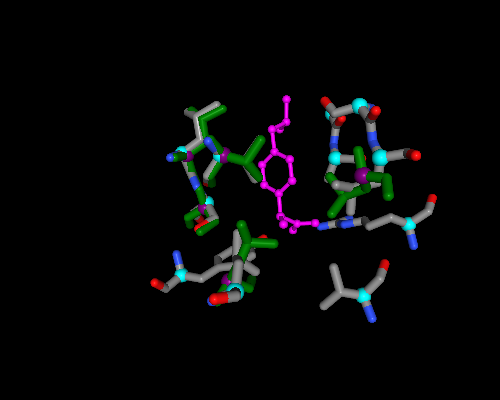
Upon clicking the radio on the 'View' column, matched pattern of amino acids is shown in green, which is superposed to the query binding site (grey). Different buttons are available for various structural representations.
